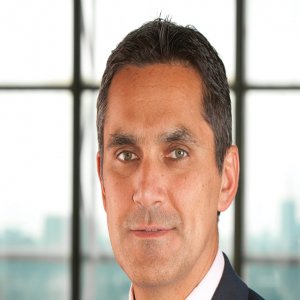Evolution of the Oil and Gas Insurance Market

STORY INLINE POST
Q: What is the history behind Lloyd’s involvement in the Mexican energy sector?
A: Lloyd’s is a market leader in oil and gas insurance, particularly in deepwater. We have been working with the Mexican industry for as long as energy insurance has existed. This has allowed us to foster a very long relationship with PEMEX, especially since it entered the offshore energy segment in the 1970s. Risk management has made the oil and gas industry in Mexico much more sophisticated. Mexico has had its accidents, including an important oil spill that marked a turning point for the industry. Larger accidents have also happened in the Gulf of Mexico, such as the Macondo incident. This has led PEMEX to push for different changes in terms of risk management, and the company continues to be at the forefront of this field. PEMEX also collaborates closely with CNH, which pays attention to risk management when approving new projects. CNH wants to make sure that investment projects consider all risks, not just the financial ones. It sees insurance as a way to help identify the true cost of those projects, and is interested in insurance as a measurement of true risks.
Q: Lloyd’s provides insurance for many midstream and logistics companies in the oil and gas industry. What are your criteria for evaluating risk concerning Mexican infrastructure?
A: It is very important to understand the motivations of the insurance buyer and the degree to which the operator of the infrastructure is retaining some level of risk that helps align interest. That is definitely one criterion we use to evaluate risk in the Mexican oil and gas industry. Partnering up on the risk sharing side is very important as well. Once there is trust concerning an aligned interest, a risk can be correspondingly higher or lower. As long as there is a shared interest in being transparent about what the risk looks like, Lloyd’s is happy to evaluate it.
Q: What are the main steps PEMEX and its contractors could take to mitigate risk in deepwater operations from an insurance perspective?
A: PEMEX is perceived in the insurance markets as being one of the most demanding companies when it comes to working with its contractors. PEMEX establishes very demanding terms in the contracts it signs, which is one way in which it already mitigates risk. At the same time, there is a big debate regarding whether it is more efficient for contractors to buy their own insurance or to buy it through an umbrella program. Another way that PEMEX could mitigate risk is through its own insurance. PEMEX consistently encourages its insurance package to come hand-in-hand with risk management conditions. Its buy-in is not just a way of paying compensation when an accident happens but to cover the entire prevention framework. If PEMEX buys insurance, involving risk surveys and demands by the insurers that certain risk mitigation measures be taken, the company can effectively control its risk. It looks to insurance markets as a source of expertise. Lloyd’s provides a wide range of advice, so our clients are not only buying financial protection. That is one of the main reasons why oil and gas companies buy insurance. After all, many major oil companies have larger balance sheets than insurance companies, they could remain self-insured if they chose to.
Q: How will the entry of new private operators into the Mexican oil and gas industry affect Lloyd’s business strategy in the country?
A: Most of those private operators will require facultative insurance. They may have taken it out with an insurance company, but most of that risk requires re-insurance. Small operators are typically serviced by a Mexican insurance company and the way Lloyd’s enters that area is by providing treaty re-insurance. For example, if small marine vessels operating in the oil and gas industry are valued below a certain level, it is possible for a Mexican insurance company to retain everything within its treaties. This is where Lloyd’s comes in, by re-insuring the entire vessel portfolio. For smaller risks, we typically support Mexican insurance companies with their treaties, such as in operative liability. For greater risks, we will send Mexican insurance companies to the facultative market in London and analyze the risks on a case-by-case basis. The difference lies in that for the facultative market, risks are looked at individually while in treaty insurance, the insurance company is given a capacity. This means that, as long as the risk is below a certain level or fits certain characteristics, the customer only has to keep us informed about the premium and the losses, and we will provide the capacity.




















